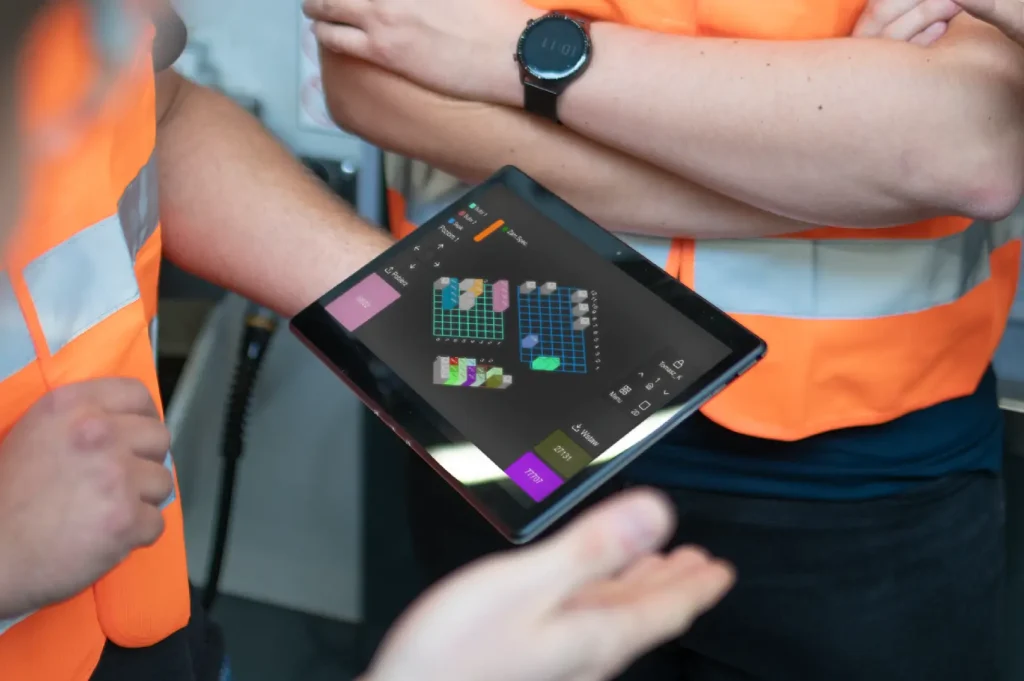
NEWSLETTER
Wpisz swój adres e-mail i zyskaj e-booka
Bez niechcianej poczty ani reklam
Tylko merytoryczne treści z obszaru digitalizacji produkcji

Did you know that over 60% of IT system implementations end in failure? Why does this happen? One of the main reasons is an inadequate approach to technology purchasing. Companies make mistakes as early as the selection of the system and provider, which later leads to implementation issues and, in some cases, complete project failure. So, what can you do to avoid this fate and find a system that will truly revolutionize your company’s operations? Here are a few key steps to help you make a sound technology choice.
Many entrepreneurs begin the purchasing process with a list of desired features for the system. While this may seem logical, it’s often the first misstep. Consider: do you really need every feature on that list? Instead of crafting a wishlist, start with a thorough analysis of the problems the system should address. Perhaps you want to streamline inventory management, automate certain production processes, or improve communication between departments. The more precisely you define the problems, the better you can select the right solutions. Understanding your challenges allows you to align the system with your organization’s needs, avoiding common pitfalls like forcing a system to fit inefficient processes. In the end, the purchase becomes an investment, not an extra burden.
Question for you: What key issues does your company face? What changes would you like to see after implementing the technology?
Every company is unique – that’s a given. But is it always worth choosing the “most unique” solution? In many cases, ready-made, proven systems are more reliable than highly customized ones because they’ve already been tested across multiple businesses. Often, when purchasing a highly tailored solution, you risk that the development team won’t be able to quickly resolve issues or adjust functions that don’t work as planned. A system that has “grown” too closely with your company can become a major challenge for future updates and changes. Consider where your business truly requires a unique approach and where it can rely on what works well in other industries. Striking a balance between what’s specific to you and what’s proven in the market can significantly increase the chances of a successful implementation.
Question for you: Does your business truly need such a dedicated solution, or could it benefit from more universal technologies?
When purchasing an IT system, it’s wise to view it as an investment that will require funding not only upfront but also in the long term. The initial purchase cost is just one part of the expenses. Additional costs include hardware, licenses, implementation, and ongoing maintenance. Many solutions come with subscription-based licenses, meaning you’ll need a budget for renewals even after the initial purchase. Implementation time can be lengthy, and sometimes servers or additional equipment can add 20-30% more to the system’s price. There may also be a need to invest in physical infrastructure and team training, as buying the system doesn’t mean it’s instantly operational. Planning a comprehensive budget is a crucial step that prepares you for a smoother implementation, helping to avoid surprises and create a roadmap for transformation, prioritizing what needs to be implemented first and what can wait.
Question for you: Do you know all the costs associated with implementing and maintaining your chosen system?

Every system, even the best one, won’t function on its own. To ensure effective implementation, a project team is essential—not only to oversee the process but also to help employees understand the purpose and benefits of the new solution. Implementing a system changes the daily reality for many employees: new tools, new functions, and new procedures. A project manager should lead the team, serving as the central communication point. Additionally, each key department should have a leader to ensure the new system meets its needs. Change management involves educating the team about upcoming changes, explaining benefits, and fostering a positive attitude toward the new system. The better prepared employees are for the change, the smoother the implementation will be. Without their understanding and support, the project may fail, no matter how well the implementation plan is designed.
Question for you: Is your company ready to form a project team and manage the change? Who could be a leader in each department?
Conducting a pilot implementation in a small part of the company or a single department is a smart approach. This pilot phase allows you to see how the system functions in practice, providing initial insights and allowing adjustments to the final plan before a full rollout. The pilot should be small enough to fit within roughly 20% of the total project budget, offering added value without committing all financial resources at the outset. Additionally, a pilot provides time to analyze errors—both technical and organizational. This approach gives you space to assess actual costs and benefits before launching the full process, which can be a safeguard for larger investments.
Question for you: Do you have a department or process in mind where you could conduct a pilot implementation?
Purchasing an IT system for a company is a significant decision that impacts various organizational areas. To avoid common mistakes and set yourself up for success, approach this process methodically: First, identify your challenges. Then, choose the best solutions, set a comprehensive budget, organize a project team, and conduct a pilot test. A well-planned implementation process can yield measurable benefits, improving efficiency, reducing costs, and enhancing communication. This positions your company to compete in an increasingly demanding market. Once each implementation step succeeds, you can fully leverage modern systems and technology to boost operational efficiency and support further growth. Finally, consider: Is your company truly ready for this change? Do you have the resources to carry out the entire process, from problem analysis to final implementation?
Thank you for reading! If you’d like to learn more about technology purchases, subscribe to my channel or reach out directly. Together, we’ll achieve success!